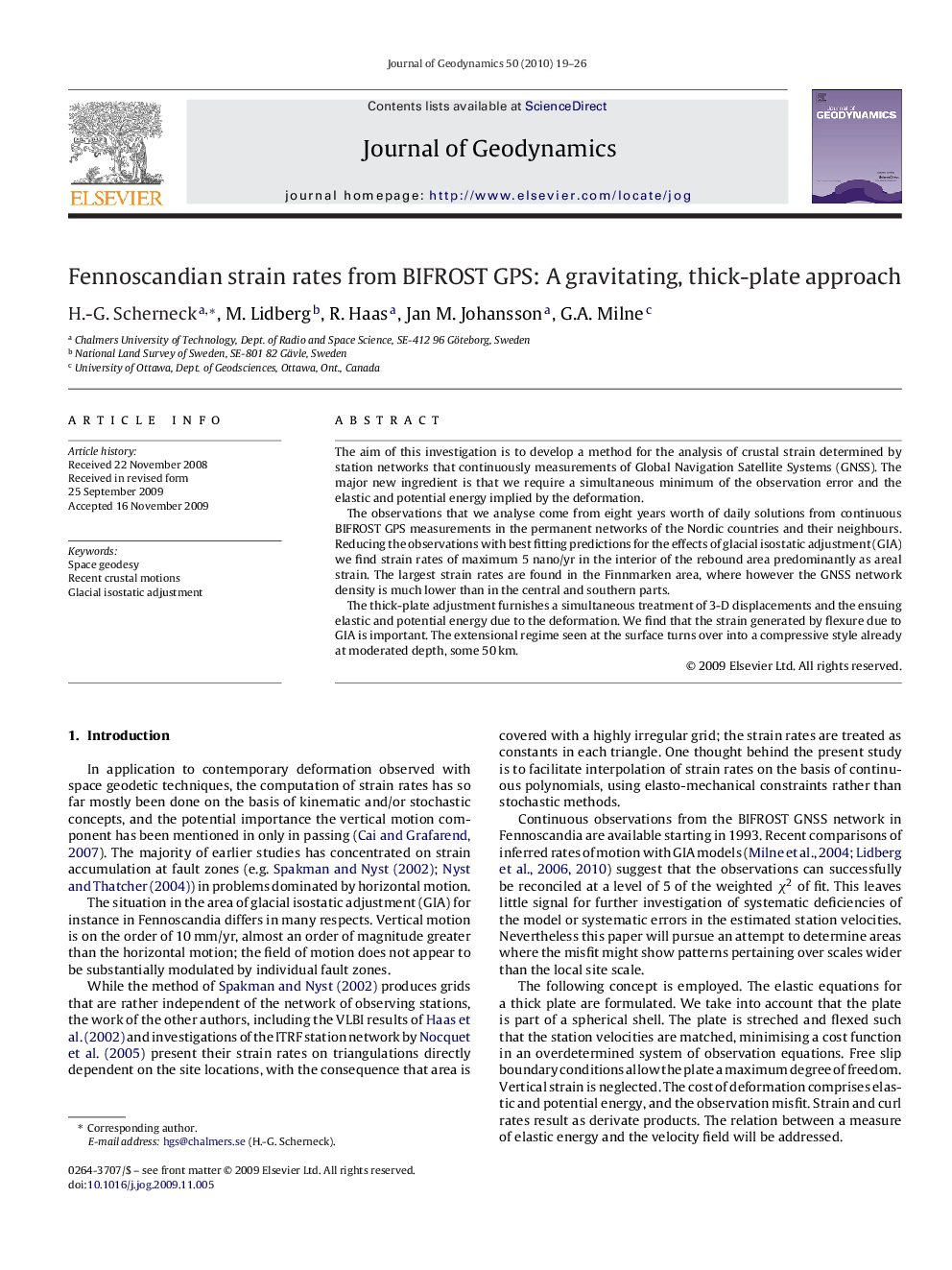| Article ID | Journal | Published Year | Pages | File Type |
|---|---|---|---|---|
| 4688509 | Journal of Geodynamics | 2010 | 8 Pages |
The aim of this investigation is to develop a method for the analysis of crustal strain determined by station networks that continuously measurements of Global Navigation Satellite Systems (GNSS). The major new ingredient is that we require a simultaneous minimum of the observation error and the elastic and potential energy implied by the deformation.The observations that we analyse come from eight years worth of daily solutions from continuous BIFROST GPS measurements in the permanent networks of the Nordic countries and their neighbours. Reducing the observations with best fitting predictions for the effects of glacial isostatic adjustment (GIA) we find strain rates of maximum 5 nano/yr in the interior of the rebound area predominantly as areal strain. The largest strain rates are found in the Finnmarken area, where however the GNSS network density is much lower than in the central and southern parts.The thick-plate adjustment furnishes a simultaneous treatment of 3-D displacements and the ensuing elastic and potential energy due to the deformation. We find that the strain generated by flexure due to GIA is important. The extensional regime seen at the surface turns over into a compressive style already at moderated depth, some 50 km.
